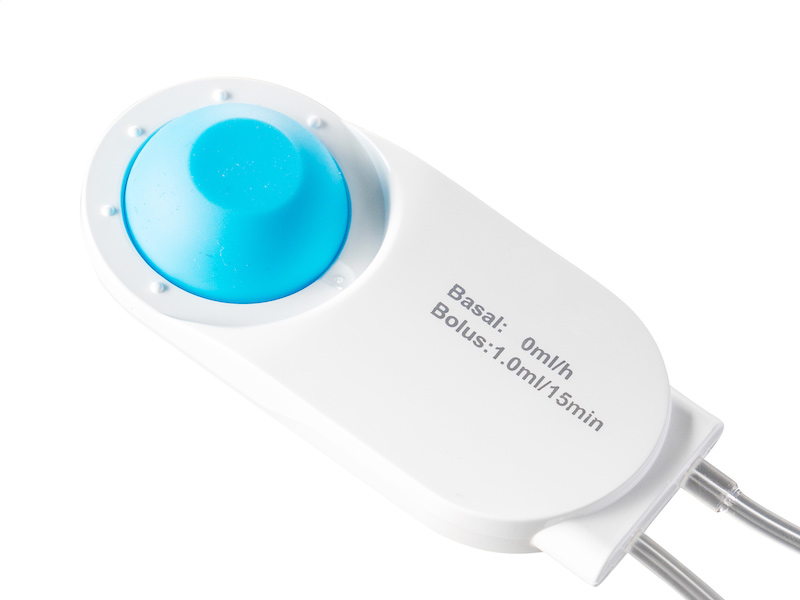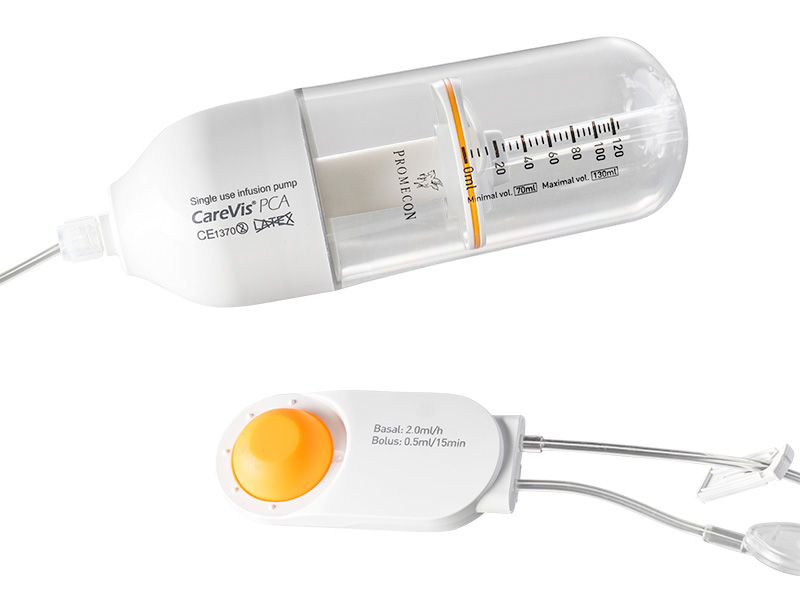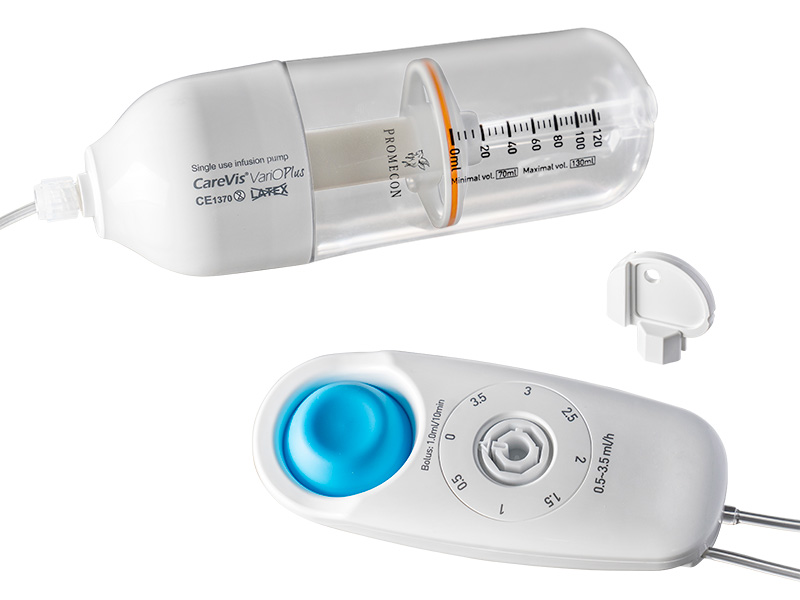In the immediate postoperative phase, patient-controlled analgesia (PCA for short) is firmly established for the self-administration of pain relievers. The use of PCA pumps, also called pain pumps, enables the patient to administer pain medication independently and according to his needs, without the presence of a doctor or nursing staff.
In the event of pain peaks, the patient administers an analgesic dose pre-prescribed by the doctor, also known as a bolus, by pressing a button on the PCA infusion pump. Depending on the setting and selection of the PCA pump, the pain medication is either administered only discontinuously via the patient-controlled bolus or as a combination of a preset continuous pain medication, also called the basal rate, and the patient-controlled bolus administration.
To prevent overdosing by pressing the bolus button too often, the bolus dose can only be recalled after a pre-programmed time interval, known as lock-out time. Within the lock-out time, the bolus dose is blocked by the electronic PCA pump.
Do elastomeric PCA pumps offer similar functionality and high safety as electronic PCA pumps? Our answer is clearly yes!

Bolus button CareVis Bolus
Functionality and safety features of CareVis elastomeric infusion pumps for pain therapy
The maximum administrable bolus dose of CareVis PCA elastomeric pumps is predefined by the volume of a flexible reservoir below the bolus button and depends on the selected pump model.
CareVis PCA pumps do not need elaborate programming
If the patient presses the bolus button above the filled reservoir, a pressure relief valve at the reservoir outlet opens and the bolus dose is administered. The pressure relief valve closes immediately after the reservoir is emptied, even if the bolus button is kept pressed, thereby preventing further unwanted drug delivery via the inlet of the reservoir.
CareVis PCA pumps prevent unintended continuous bolus application
When the bolus button is released, the bolus reservoir fills again via the infusion pressure of the elastomeric infusion pump. The reconstitution of the bolus is time-delayed. The flow rate of a flow restrictor at the reservoir entrance regulates the filling time. The filling time of the reservoir corresponds to the lock-out time of electronic pumps and is predefined for CareVis PCA pumps by the selected pump model.
CareVis PCA pumps protect against overdosing and incorrect programming
Further advantages and variety of models of CareVis PCA pumps
With CareVis PCA pumps, the bolus volume and the associated lock-out time (= filling time) as well as the optionally selectable continuous basal rate are predetermined by the pump model. As few standard protocols are generally used for postoperative pain therapy, a correspondingly small number of pump models have to be stocked in a clinic. Experience has shown that many clinics only use one dedicated model for their needs. In this respect, PCA elastomeric pumps are more of an advantage because incorrect settings, as can occur with electronic PCA pumps, are not possible.
CareVis PCA model variety offers predefined solutions for common pain protocols
If more flexibility in administration is required, the CareVis VariO Plus pumps can be used, which allow a variable adjustment of the basal rate using a removable key. This multi-rate function is combined with a bolus unit in one housing.
CareVis PCA with adjustable basal rate offers a safe alternative to electronic infusion pumps
Overview of CareVis PCA elastomer pump models
| CareVis BoluS | CareVis PCA | CareVis VariO Plus | |
| PCA bolus function | • | • | • |
| Continuous basal rate | • | ||
| Adjustable basal rate | • |



Single-use infusion pump with selectable basal rate supplemented by bolus function
Learn more
